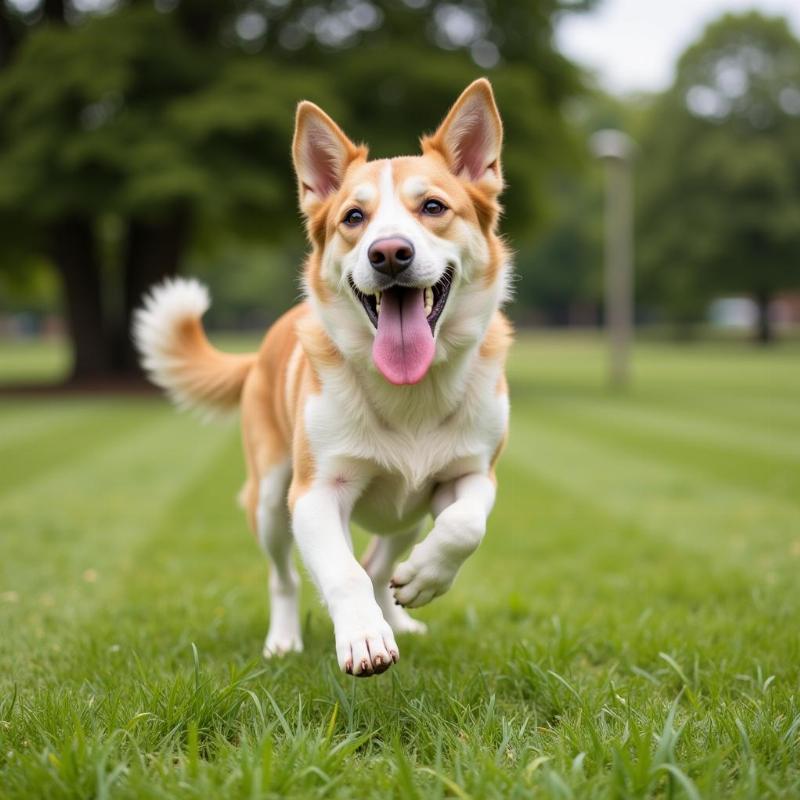Keeping your furry friend safe from pesky bugs is a top priority for any dog owner in the US. While commercial bug repellents are readily available, many pet parents are turning to homemade solutions for a more natural approach to pest control. Homemade bug repellent for dogs offers a potentially safer and more cost-effective alternative, allowing you to know exactly what’s going on your dog’s skin.
Why Choose Homemade Bug Repellent?
Many commercial bug repellents contain harsh chemicals like DEET, which can be harmful to dogs if ingested or absorbed through the skin. Homemade repellents, on the other hand, utilize natural ingredients like essential oils and herbs known for their insect-repelling properties. This gives you more control over the ingredients and allows you to tailor the repellent to your dog’s sensitivities. Plus, homemade options are often more budget-friendly. Are you concerned about the chemicals in commercial products? Making your own repellent can give you peace of mind.
Effective Natural Ingredients for Repelling Bugs
Certain essential oils are particularly effective at deterring insects. Citronella, lemongrass, and eucalyptus are known for their strong scents that bugs dislike. Lavender oil not only repels insects but also has calming properties, which can be beneficial for anxious dogs. Remember to always dilute essential oils properly before applying them to your dog. Never apply undiluted essential oils directly to their skin.
Using Apple Cider Vinegar for Pest Control
Apple cider vinegar is another powerful ingredient in homemade bug repellents. Its acidic nature creates an environment that fleas and ticks find unappealing. Diluted apple cider vinegar can be sprayed directly onto your dog’s coat or added to their drinking water (always consult your vet before adding anything to your dog’s water).
Creating Your Homemade Bug Repellent Recipe
Here’s a simple and effective recipe:
- Combine one cup of water with one cup of apple cider vinegar in a spray bottle.
- Add 30-40 drops of essential oils like citronella, lemongrass, and lavender.
- Shake well before each use.
- Spray lightly onto your dog’s coat, avoiding the eyes, nose, and mouth.
Always test a small area of your dog’s skin before applying the repellent all over to check for any allergic reactions. If your dog shows any signs of irritation, discontinue use and consult your veterinarian.
Can I use essential oils directly on my dog?
No, never apply undiluted essential oils directly to your dog’s skin. Essential oils are highly concentrated and can cause skin irritation or other adverse reactions. Always dilute them properly in a carrier oil or water before application.
Are all essential oils safe for dogs?
Not all essential oils are safe for dogs. Some, like tea tree oil, can be toxic. Always research the safety of an essential oil for dogs before using it in a homemade repellent. Consult with your veterinarian if you have any concerns.
 Dog enjoying the outdoors without bugs
Dog enjoying the outdoors without bugs
Conclusion
Homemade bug repellent for dogs provides a natural and often more affordable alternative to commercial products. By using ingredients like apple cider vinegar and carefully selected essential oils, you can create a safe and effective solution to keep those pesky bugs away. Remember to always prioritize your dog’s safety and consult with your veterinarian if you have any questions or concerns about using homemade repellents.
FAQ
- What if my dog licks the homemade repellent? While the ingredients are generally safe in diluted form, excessive ingestion could cause digestive upset. Contact your veterinarian if your dog ingests a significant amount.
- How often can I apply homemade bug repellent? Reapply as needed, typically every few hours, especially during peak mosquito and tick season.
- Can I use this repellent on puppies? Consult your veterinarian before using any repellent, including homemade ones, on puppies.
- What if my dog has sensitive skin? Always test a small area first and dilute the repellent further if necessary.
- Are there any essential oils I should avoid? Yes, avoid tea tree oil, pennyroyal, and wintergreen, as these can be toxic to dogs.
- Can I add other ingredients to the repellent? While other natural ingredients may offer some repellent properties, it’s best to stick to proven and safe options. Consult your veterinarian before adding anything new.
- Where can I buy high-quality essential oils? Look for reputable brands that specialize in pure, therapeutic-grade essential oils.
Related Articles
- soothing ear drops for dogs
- flea and tick essential oil recipe for dogs
- lavender oil for dogs fleas
- natural flea & tick spray for dogs
Beautdogs.us is your premier online resource for all things dog-related in the US. We offer expert advice on dog breeds, grooming, nutrition, and overall wellness. Whether you’re a new dog owner or a seasoned pro, Beautdogs.us provides trusted information to help you navigate the joys and responsibilities of dog ownership. Contact us today for all your dog-related needs! Email: [email protected], Phone: +1 501-555-7529.